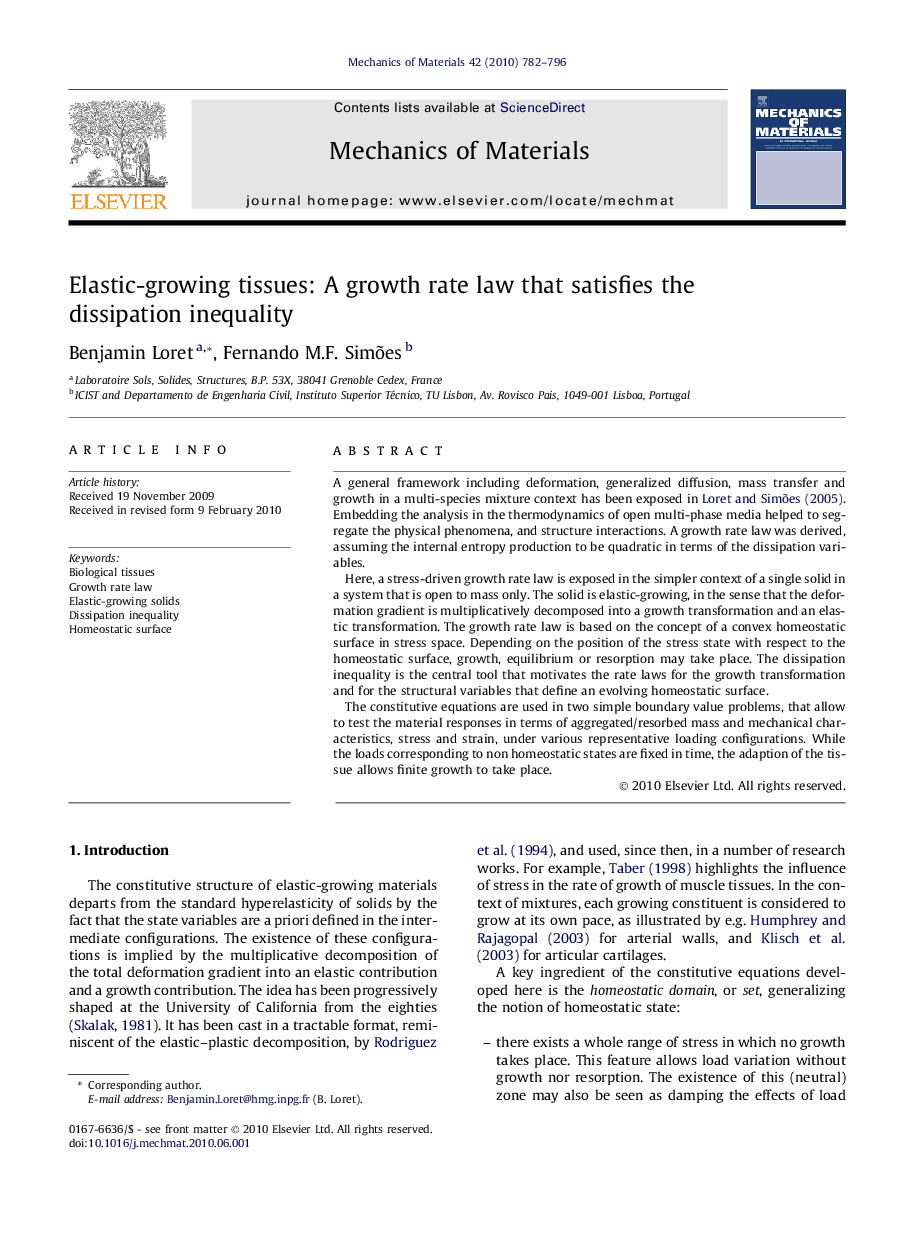| Article ID | Journal | Published Year | Pages | File Type |
|---|---|---|---|---|
| 797691 | Mechanics of Materials | 2010 | 15 Pages |
A general framework including deformation, generalized diffusion, mass transfer and growth in a multi-species mixture context has been exposed in Loret and Simões (2005). Embedding the analysis in the thermodynamics of open multi-phase media helped to segregate the physical phenomena, and structure interactions. A growth rate law was derived, assuming the internal entropy production to be quadratic in terms of the dissipation variables.Here, a stress-driven growth rate law is exposed in the simpler context of a single solid in a system that is open to mass only. The solid is elastic-growing, in the sense that the deformation gradient is multiplicatively decomposed into a growth transformation and an elastic transformation. The growth rate law is based on the concept of a convex homeostatic surface in stress space. Depending on the position of the stress state with respect to the homeostatic surface, growth, equilibrium or resorption may take place. The dissipation inequality is the central tool that motivates the rate laws for the growth transformation and for the structural variables that define an evolving homeostatic surface.The constitutive equations are used in two simple boundary value problems, that allow to test the material responses in terms of aggregated/resorbed mass and mechanical characteristics, stress and strain, under various representative loading configurations. While the loads corresponding to non homeostatic states are fixed in time, the adaption of the tissue allows finite growth to take place.
